#Water Flosser Market
Explore tagged Tumblr posts
Text
Water Flosser Market for Electric Vehicle Market Size, Share, Demand, Future Growth, Challenges and Competitive Analysis
"Global Water Flosser Market – Industry Trends and Forecast to 2028
Global Water Flosser Market, By Product Type (Portable and Cordless Water Flosser, Countertop Water Flosser, Attachable Water Flosser), Price (Economy, Mid-Range, Premium), Application (Home Care, Dental Clinic, Hospitals), End Use (Household, Commercial), Distribution Channel (Hypermarkets / Supermarkets, Specialty Stores, Drug Stores and Pharmacies, Convenience Stores, Online Retailers), Country (U.S., Canada, Mexico, Brazil, Argentina, Rest of South America, Germany, France, Italy, U.K., Belgium, Spain, Russia, Turkey, Netherlands, Switzerland, Rest of Europe, Japan, China, India, South Korea, Australia, Singapore, Malaysia, Thailand, Indonesia, Philippines, Rest of Asia-Pacific, U.A.E, Saudi Arabia, Egypt, South Africa, Israel, Rest of Middle East and Africa) Industry Trends and Forecast to 2028
Access Full 350 Pages PDF Report @
Core Objective of Water Flosser Market:
Every firm in the Water Flosser Market has objectives but this market research report focus on the crucial objectives, so you can analysis about competition, future market, new products, and informative data that can raise your sales volume exponentially.
Size of the Water Flosser Market and growth rate factors.
Important changes in the future Water Flosser Market.
Top worldwide competitors of the Market.
Scope and product outlook of Water Flosser Market.
Developing regions with potential growth in the future.
Tough Challenges and risk faced in Market.
Global Water Flosser-top manufacturers profile and sales statistics.
Highlights of TOC:
Chapter 1: Market overview
Chapter 2: Global Water Flosser Market
Chapter 3: Regional analysis of the Global Water Flosser Market industry
Chapter 4: Water Flosser Market segmentation based on types and applications
Chapter 5: Revenue analysis based on types and applications
Chapter 6: Market share
Chapter 7: Competitive Landscape
Chapter 8: Drivers, Restraints, Challenges, and Opportunities
Chapter 9: Gross Margin and Price Analysis
How the Report Aids Your Business Discretion?
This section of this Market report highlights some of the most relevant factors and growth enablers that collectively ensure a high-end growth spurt
The report unravels details on pronounced share assessments across both country-wise as well as region-based segments
A leading synopsis of market share analysis of dynamic players inclusive of high-end industry veterans
New player entry analysis and their scope of new business models
The report includes strategic recommendations for new business veterans as well as established players seeking novel growth avenues
A detailed consultation services based on historical as well as current timelines to ensure feasible forecast predictions
A thorough evaluation and detailed study of various segments as well as sub-segments across regional and country-specific developments
Details on market estimations, market size, dimensions
A review of market competitors, their high-end product and service portfolios, dynamic trends, as well as technological advances that portray high end growth in this Market
Browse Trending Reports:
Air Sports Equipment Market Secondary Macronutrients Market Blood Gas Analyzer Market Methotrexate Injection Market Smart Room Heater Market Battery Market Infrastructure As a Service Iaas Health Cloud Market Peritonitis Treatment Market Yacht Charter Market Next Generation Printing Ink Market Functional Confectionery Market Herbal Ready To Brink Beverages Market Wirewound Resistor Market Gelatin Substitutes Market Soy Based Surfactants Market Trimethlyaminuria Market Secondary Agricultural Nutrients Market Tomatoes Market Electric Kick Scooters Market
About Data Bridge Market Research:
Data Bridge set forth itself as an unconventional and neoteric Market research and consulting firm with unparalleled level of resilience and integrated approaches. We are determined to unearth the best market opportunities and foster efficient information for your business to thrive in the market. Data Bridge endeavors to provide appropriate solutions to the complex business challenges and initiates an effortless decision-making process.
Contact Us:
Data Bridge Market Research
US: +1 614 591 3140
UK: +44 845 154 9652
APAC : +653 1251 975
Email: [email protected]"

0 notes
Text
Water Flossers for Teeth: A Splash of Happy Smile
Raise your hands if you, too, hate flossing your teeth!
Ahh, too many hands!
Did you know that in a stat report published in 2017, participants from Great Britain were questioned about their daily dental habits, which were explicitly focused on dental flossing?
Interestingly, most age brackets revealed avoiding tooth flossing in their daily routine. Only 37% of participants over 55 years reported practising regular flossing, whereas only 18% of individuals aged 18 to 24 claimed to do the same.
So you now have the numbers, too! It’s proven that you hate dental flossing despite knowing the Golden Rules for Dental Hygiene and how it can negatively impact oral health.
You must be wondering, what’s the way out of this painful oral care routine?
Here comes the good news!
You can replace your painful string floss with a water flosser or Waterpik. With water flossers, the gentle yet effective stream of water massages your gums, whisking away debris and plaque. Doesn’t that sound comforting?
First things first: What is a water flosser for teeth?
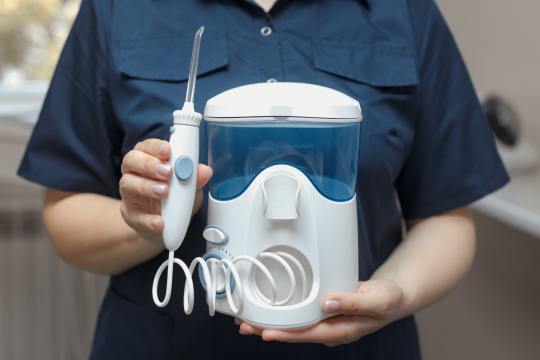
A water flosser for teeth or an oral irrigator is a handheld device that uses a pressurised stream of water to floss your teeth. The best part about water flossing is that it can easily clean the inconspicuous areas between teeth and along the gumline without causing pain or bleeding.
It is one of the best alternatives to traditional dental floss, which can effectively remove plaque and debris. You can adjust the water pressure with oral irrigators depending on your comfort level.
Furthermore, dental flossers are the best choice if you have undergone specific procedures like braces or bridges.
Read More
0 notes
Note
Hello, I am looking forward to your neurodivergent dental care post! A couple questions:
Is there an optimal order for brushing/ flossing/tongue scraping/ mouthwash?
Does mothwash do anything? (Would it help with bad breath?) How do I pick a good one? Are there any non mint flavored ones out there?
How can I make flossing less of a sensory nightmare? Flossing with regular floss gets my hands all spitty, and the floss cuts off blood flow to my fingers super painfully. But single use plastic flossers and reusable floss holders have the floss get loose and start to shred and leave horrible little bits of floss between my teeth.
Also, this is not a question, but information I wish I had figured out much sooner: Your toothpaste should not be spicy or burning. It should not be painful to hold it in your mouth for the 2 mins it takes to brush your teeth. The inside of your mouth should not be shedding layers of skin after you brush your teeth. If your teeth are incredibly sensitive and painful, but your dentist sees no problems, and none of the typical remedies are helping, it might be an irritant in your toothpaste (mint in my case) that is worsening your sensitivity.
ty for sending this in!!! i will be talking about a lot of this in my post but let me answer your specific questions here. (for long posts like this, i’ll put the most important info in bold for my fellow adhders who have trouble understanding big chunks of text!!)
the best order is floss, scrape, mouthwash, brush. the floss and tongue scraper will loosen up all the gunk, and the mouthwash will rinse it away and disinfect your tissues. after brushing, if you can tolerate the feeling, spit but don’t rinse, leave the toothpaste sitting on your teeth so the fluoride can sink in and be even more effective.
mouthwash is mainly used to neutralize bacteria on your tissues, meaning your tongue, gums, and cheeks. listerine mouthwashes are the best ones on the market. the original formula is pretty comprehensive but they have lots of varieties, like one specifically for gum health, an alcohol-free formula, and more. i believe they also have a variety of flavors. ACT mouthwash is also decent if you can’t find a non-mint listerine, and i know they have kids’ mouthwash that have milder flavors. it can definitely help with bad breath, especially in combination with tongue scraping! bad breath is also a common byproduct of dry mouth, for which therabreath rinses are super helpful.
i also have horrible sensory issues with traditional string floss, so i pretty much exclusively use floss picks. if you’re finding that they’re coming loose or shredding, my guess is that the ones you’re using are of pretty low quality, and/or your teeth are very crowded and it’s difficult to work the floss in between them without damaging it. i have the same problem with a lot of crowding in my lower teeth.
the oral-b glide floss picks are my favorite (they also have a glide string floss!!) the floss itself is very strong and shred resistant, and the handles are easy to grip. they make an unflavored one too, if you’re sensitive to mint!! the reusable floss holders are nice, but they’re too many steps for me so i just use the disposable ones.
a water flosser can be helpful too, but i find them very difficult to use. they’re also not as effective as manual floss, so if you’re using one, dentists still recommend using manual floss at least once a week. pro tip: fill your water flosser with a 50/50 mix of water and fluoride mouthwash!
i’m just going to draw attention to that last bit. your toothpaste should not burn. if your toothpaste causes pain, a burning sensation, or any damage to your soft tissues, you likely have an allergy to an ingredient in the toothpaste. stop using it immediately and talk to your dentist about an alternative.
p.s. every product i mentioned in this post should be available at any pharmacy or grocery store with a pharmacy section, but it’s also very common for dental offices to carry free samples!! ask yours if they do before spending money on a product if you’re unsure about it :)
LEGAL DISCLAIMER: This blog is for educational and informational purposes only. This does not constitute providing medical advice or professional services. Information on this blog should NOT be used for diagnostics or treating a health problem. Always seek the advice of your doctor or other qualified dental health provider regarding diagnosis and treatment of a dental condition. Never disregard professional medical advice or delay in seeking it because of something you have read on this blog.
7 notes
·
View notes
Text
How to Keep Your Teeth Whiter with Braces: 5 Ways for White Teeth

Braces are the type of dental procedure used to straighten or align teeth that are not symmetrical with each other. People who have weird teeth structure, especially front teeth can be treated with these braces that are attached to your teeth for many days.
But when the braces process is finished and you remove the braces, your teeth become two-shaded with a mix of white and pale that can make you feel embarrassed opening your mouth in front of others, especially at public places when you smile or bite a food at restaurants.
The braces cover your teeth for many days and that covered area does not get cleaned when you brush your teeth making it pale or yellowish. This pale or yellowish colour of teeth can attract bacteria causing the cavity, hence you need to clean your teeth and make it whiter. Below, you can find out the best ways to get whiter teeth with braces on your mouth.
Five Ways to Make Teeth Whiter with Braces:
1. Use a High-Quality Toothbrush
To ensure your teeth get cleaned properly, you should use a high-quality toothbrush with having soft bristle. You can also use the electric brush that rotates itself and deep clean your teeth. And always make sure brush your teeth two times, in the morning and at night before going to bed.
However, using a low-quality brush or hard bristle can damage the enamel and dentin of teeth. If you are wearing braces, using the hard bristle toothpaste can disturb the alignment of your teeth or can disturb the procedure of orthodontic dental treatment.
2. Try the Fluoride Mouthwash
The teeth covered with braces are also susceptible to cavities, as due to metal wring there are huge chances of fibre or sticky foodstuffs easily stuck under the braces or between the two teeth. Here you need to take care of your teeth with extraordinary mouth-cleaning materials. You can use the fluoride mouthwash that helps to clean your teeth medically.

In the market, you can find various types of teeth whitening mouthwash, make sure to use the non-alcoholic one, as the spirit contained in such mouthwashes can make your mouth dry resulting in bacteria and plaque getting attracted faster causing the cavities.
3. Using the Water Flosser Can Help
A water flosser or waterpik is another option you can use to clean your teeth without disturbing the alignment of your braces. Such water flossers can reach every corner of your teeth where toothbrushes or other chemicals can't reach like your gum line making your teeth white.
However, regular using of water flossers can be a good option for flossing, but for long-lasting results, you should use the Orthodontic Flossers. But water flosser is more affordable and available anytime, you can use it anytime as per your ease.
4. Use Orthodontic Flossers or Floss Threaders
Apart from water flossers, you can also use orthodontic flossers or floss threaders to clean your teeth. To use the floss threaders you need to use the flosser moving on to the next pair of teeth. While performing the flosser make sure also clean the molar teeth from the front and back sides both where normal toothbrushes do not reach easily.
However, if you are wearing braces you can use the regular dental floss threaders to clean your teeth. And you can find various types of floss threader threads available in the market that are especially designed to work with braces and floss under your mouth.
5. Fluoride or Non-Whitening Toothpaste
If you are using braces, you should brush with the right toothpaste like non-abrasive and doesn't contain whitening ingredients. In fact, using the white toothpaste orfluoride-based paste with braces will able to clean only the visible areas when you brush your teeth.
Here you need to use fluoride toothpaste containing natural minerals to keep your enamel strong and also prevent teeth from cavities. When you use such toothpaste it will also help you in keeping your teeth healthy and free from gums and bacteria.
Summing-up
To clean your teeth or make your teeth whiter you can follow the above-mentioned cleaning technique. These teeth cleaning procedures are useful when you wear the braces, and they do not disturb the alignment of your teeth making this dental procedure successful.
To ensure the braces do not get disturbed, use high-quality soft bristle toothpaste, and you can also use the fluoride mouthwash or flossing technique to keep the teeth clean and white. However, to make your teeth whiter to get cleaned professionally, you can visit the best dental clinic in Green Wood Societyand ask for teeth whitening services for deep bleaching teeth in Greater Noida.
Source: https://drsinhadentalclinic.wordpress.com/2025/04/30/how-to-keep-your-teeth-whiter-with-braces-5-ways-for-white-teeth/
0 notes
Text
Japan Countertop Water Flosser Market was valued at USD 0.12 Billion in 2022 and is projected to reach USD 0.22 Billion by 2030, growing at a CAGR of 9.0% from 2024 to 2030.
0 notes
Text
0 notes
Text
Global Dental Hygiene Devices Market report : Growth Opportunities And Regional Insights
The global Dental Hygiene Devices Market, valued at USD 4.54 billion in 2023, is set for substantial growth over the next decade. Projections indicate that the market will reach USD 7.1 billion by 2032, growing at a compound annual growth rate (CAGR) of 5.08% during the forecast period from 2024 to 2032. The growing awareness of oral health, the increasing prevalence of dental diseases, technological advancements in dental hygiene products, and rising consumer demand for at-home dental care are driving this expansion.
Get Free Sample Report on Dental Hygiene Devices Market
Key Drivers of Market Growth
Several factors are contributing to the accelerated growth of the dental hygiene devices market:
Increasing Prevalence of Oral Health Problems: Poor oral hygiene remains one of the leading causes of dental diseases such as tooth decay, gum disease, and bad breath. The rising incidence of oral health issues, particularly in aging populations and children, is driving demand for dental hygiene devices. According to the World Health Organization (WHO), dental diseases affect more than 3.5 billion people worldwide, creating a substantial need for preventive and maintenance oral care solutions.
Technological Advancements in Dental Hygiene Devices: One of the key factors propelling the growth of the market is the continuous innovation in dental hygiene products. Manufacturers are introducing advanced technologies, such as smart toothbrushes, water flossers, and air flossers, designed to provide a more effective, efficient, and personalized dental care experience. Smart toothbrushes, equipped with sensors and connectivity to mobile apps, are gaining popularity by providing real-time feedback on brushing techniques, encouraging users to improve their oral hygiene habits.
Rising Consumer Awareness and Demand for Preventive Care: As consumers become more aware of the importance of preventive oral care, the demand for dental hygiene devices has increased. In particular, products like electric toothbrushes, dental flossers, and tongue scrapers have gained traction as consumers seek better solutions for maintaining their oral health at home. Growing awareness campaigns, healthcare initiatives, and the increasing focus on self-care are further fueling the market's expansion.
Expanding Middle-Class Population and Increased Disposable Income: The rise of the global middle class, especially in emerging economies, is contributing to the increased adoption of dental hygiene devices. As disposable incomes rise, consumers are increasingly willing to invest in premium oral care products. In regions such as Asia Pacific, where oral care awareness is growing, the market for dental hygiene devices is experiencing rapid growth, particularly for high-quality electric toothbrushes and advanced flossing systems.
Focus on Aesthetic Dentistry and Cosmetic Dental Treatments: Growing interest in aesthetic dentistry, including teeth whitening, tooth alignment, and cosmetic enhancements, is encouraging consumers to invest in oral care products that complement these procedures. This trend is expected to contribute to the demand for advanced dental hygiene devices designed to maintain and enhance the results of cosmetic dental treatments.
Key Players
Key Service Providers/Manufacturers
Philips (Sonicare 9900 Prestige, Sonicare Power Flosser 3000)
Oral-B (Genius X, iO3)
Waterpik (Aquarius Water Flosser, Sensonic Sonic Electric Toothbrush)
Quip (Sonic Toothbrush, Portable Water Flosser)
BURST Oral Care (Pro Sonic Toothbrush, Water Flosser)
Colgate (hum Smart Battery Toothbrush, 360° Advanced Whitening Toothbrush)
Panasonic (Oral Irrigator EW1213, Sonic Vibration Toothbrush EW-DM81)
Suri (Sonic Toothbrush, Recyclable Brush Heads)
Fairywill (Sonic Electric Toothbrush, Water Flosser)
Boka (Boka Toothbrush, Boka Flosser)
Planmeca (Planmeca Compact i5 Dental Unit, Planmeca ProX Intraoral X-ray Unit)
KaVo Kerr (KaVo PROPHYflex 4 Air Polishing Device, Kerr SonicFill 3)
Ivoclar (Ivoclar Vivadent Bluephase PowerCure, Ivoclar Vivadent PrograMill PM7)
Dentsply Sirona (X-Smart IQ Endodontic Motor, Cavitron Ultrasonic Scaler)
Sonicare (ProtectiveClean 6100, DiamondClean Smart)
Mode (Mode Electric Toothbrush, Mode Brush Heads)
Lucent (Lucent Prism Electric Toothbrush, Lucent Replacement Heads)
Snow (LED Whitening Electric Toothbrush, Snow Whitening Kit)
Flaus (Electric Flosser, Flaus Floss Heads)
Icy Bear (Next-Generation Sonic Toothbrush, Icy Bear Whitening Strips)
Market Segmentation
The dental hygiene devices market can be segmented by product type, end-user, and region.
By Product Type:
Electric Toothbrushes: Electric toothbrushes are the largest and fastest-growing segment in the dental hygiene devices market. These devices are considered more effective at removing plaque and preventing gum disease compared to manual toothbrushes. The introduction of smart toothbrushes, featuring real-time feedback and app connectivity, is further driving market growth in this category.
Water Flossers and Air Flossers: Water flossers and air flossers are gaining popularity due to their ability to clean between teeth and along the gum line more effectively than traditional dental floss. These devices offer a gentler and more convenient alternative to manual flossing, making them particularly appealing to individuals with sensitive gums.
Dental Floss and Tongue Scrapers: Dental floss and tongue scrapers continue to be key components of personal oral hygiene routines. Although these products are more traditional, they remain essential for maintaining good oral health, especially for individuals looking for an affordable and easy-to-use option.
Other Devices: This category includes dental care products such as orthodontic toothbrushes, electric interdental brushes, and UV sanitizers. These specialized devices cater to specific needs, such as caring for braces or sanitizing toothbrushes to prevent bacterial growth.
By End-User:
Consumers: The consumer segment holds the largest share of the market, driven by the increasing demand for home dental care products. The rising awareness of the importance of preventive care has encouraged consumers to invest in dental hygiene devices that improve brushing techniques, promote gum health, and ensure overall oral hygiene.
Dental Professionals: The dental professional segment is also significant, particularly in the use of advanced devices for in-office procedures, including ultrasonic scalers and professional flossing tools. Dentists and hygienists are also recommending more advanced dental hygiene devices to their patients, further driving market demand.
Make Enquiry about Dental Hygiene Devices Market
Competitive Landscape
The dental hygiene devices market is highly competitive, with numerous established players and emerging brands vying for market share. Key players in the market include Philips Sonicare, Oral-B (Procter & Gamble), Waterpik, Colgate-Palmolive, Panasonic, and Fairywill. These companies are investing in product innovation, expanding their distribution channels, and increasing their marketing efforts to appeal to a broader consumer base. The market also sees a rise in digital health solutions, with smart toothbrushes and connected devices becoming increasingly popular.
Conclusion
The global dental hygiene devices market is on a strong growth trajectory, fueled by increasing consumer awareness of oral health, technological innovations, and a growing focus on preventive care. With a projected CAGR of 5.08%, the market is set to reach USD 7.1 billion by 2032. As consumers continue to prioritize oral hygiene, manufacturers will have ample opportunities to innovate and offer advanced solutions that improve dental care practices worldwide. The rise of smart technologies, combined with growing demand for effective and personalized dental products, is expected to shape the future of the dental hygiene devices market, ensuring its sustained growth in the coming years.
Conclusion
The global neurorehabilitation market is poised for strong growth in the coming years, driven by increasing neurological disorders, technological advancements, and a growing focus on post-acute care and rehabilitation. With a projected CAGR of 13.68%, the market is expected to reach USD 6.18 billion by 2032, providing significant opportunities for healthcare providers, technology developers, and investors in the neurorehabilitation space. The evolution of neurorehabilitation technologies promises to enhance patient recovery, improve long-term outcomes, and empower individuals with neurological conditions to regain independence and quality of life.
About US:
SNS Insider is one of the leading market research and consulting agencies that dominates the market research industry globally. Our company's aim is to give clients the knowledge they require in order to function in changing circumstances. In order to give you current, accurate market data, consumer insights, and opinions so that you can make decisions with confidence, we employ a variety of techniques, including surveys, video talks, and focus groups around the world.
Contact Us:
Jagney Dave - Vice President of Client Engagement
Phone: +1-315 636 4242 (US) | +44- 20 3290 5010 (UK)
#Dental Hygiene Devices Market#Dental Hygiene Devices Market Size#Dental Hygiene Devices Market Report#Dental Hygiene Devices Market Trend#Dental Hygiene Devices Market Share#Dental Hygiene Devices Market Growth
0 notes
Text
Best Dental Tools for Effective Oral Care
Healthy smiles don't only require brushing teeth; it also involves using the best dental tools. From regular everyday tools such as toothbrushes to professional equipment used in the dental professional, the best dental tools ensure proper oral hygiene and effective treatments. Here's a look at some of the best dental tools that can keep your teeth and gums healthy.
1. Electric Toothbrush
An electric toothbrush is probably one of the best dental tools you can use for effective removal of plaque. Unlike manual models, electric ones give a much more consistent motion in brushing off plaque and bacteria. Some good electric toothbrushes include the Philips Sonicare and Oral-B, which include features such as timers, pressure sensors, and multiple brushing modes to ensure that you brush for the recommended time and avoid pressing too hard against your gums.
2. Dental Floss
This flossing will reach the parts where a toothbrush cannot and removes food particles between the teeth, which eventually contribute to the building of plaque on the gums and leads to disease and cavities. Good-quality dental flosses are produced, including Oral-B Glide and Cocofloss, and provide easy glide, strength, comfort, and are effective at cleaning out debris from between teeth. Daily flossing is required to ensure oral hygiene.
3. Mouthwash
Mouthwash is a good supplement to your brushing and flossing. It kills bacteria, freshens breath, and offers additional protection against cavities and gum disease. The best mouthwashes contain fluoride for the prevention of cavities and antiseptic properties to reduce plaque and gingivitis. Popular mouthwashes include Listerine and TheraBreath, which effectively kill bacteria and promote fresh breath, while fluoride mouthwashes like ACT offer added enamel protection.
4. Tongue Scraper
In oral hygiene practices, the tongue is usually the forgotten part that houses bacteria that causes bad breath. A scraper for the tongue is one of the best tools in dentistry that removes a buildup of bacteria, food parts, and dead cells on the surface of the tongue. It can be produced by DenTek and Orabrush, thus making it trusted to help maintain a cleaner mouth and fresher breath.
5. Interdental Brushes
It is a small, cone-shaped brush used to clean between teeth by removing plaque and other food particles. It is especially used among individuals with orthodontic appliances, implants, or larger interproximal spaces. TePe and GUM are very popular, widely-used brands that provide a range of sizes and designs of interdental brushes to meet the particular needs and requirements of the users, making them one of the best tools for an effective cleaning between the teeth.
6. Water Flosser
Water flossers, also known as oral irrigators, use a pulsating stream of water to clean between teeth and along the gumline. This tool is an excellent alternative for people who find traditional flossing difficult or uncomfortable. Waterpik is a leading brand in the water flosser market, offering effective models that can clean deep between teeth, remove plaque, and improve gum health.
7. Dental Mirrors
A dental mirror is a very small, hand-held tool that assists you in viewing hard-to-reach areas inside the mouth, like the surfaces at the back of your teeth and up to the gumline. These mirrors are best used for in-home examination because they help you check on the status of your teeth and your gums for signs of plaque or a cavity. Dental mirrors are also commonly used in the hands of professionals during cleaning and check-up procedures, but they can prove to be helpful for anyone to keep an eye on their oral health.
1 note
·
View note
Text
0 notes
Text
"HAPPY SMILE V34"
There are an affiliate link of this product its may make profit of me Happy Smile V34
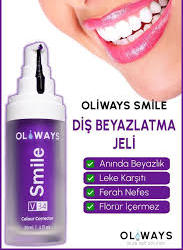
1. Introduction to Happy Smile V34
A radiant smile is more than just an aesthetic asset; it's a reflection of good health and confidence. In recent years, the significance of oral health has transcended beyond just clean teeth and fresh breath. It's about preventing diseases, maintaining overall well-being, and enhancing one’s quality of life. In the pursuit of these goals, dental technology has evolved, bringing forth innovations that revolutionize our approach to oral care. One such innovation is the Happy Smile V34.
Understanding the Importance of Oral Health
Oral health is a crucial component of general health. The mouth is the gateway to the body, and maintaining its health is vital for preventing a host of diseases. Poor oral hygiene has been linked to conditions like heart disease, diabetes, and respiratory infections. Thus, the tools and products we use to care for our mouths hold significant importance.
The Evolution of Dental Technology and Innovations
From the simple toothbrush and toothpaste to electric toothbrushes and water flossers, dental technology has seen substantial advancements. These innovations aim to make oral care more effective and efficient, reducing the risk of cavities, gum disease, and other oral issues. Happy Smile V34 stands at the forefront of this evolution, offering a comprehensive solution for those seeking optimal oral health.
2. What is Happy Smile V34?
Happy Smile V34 is a cutting-edge dental product designed to provide comprehensive oral care. Unlike traditional dental products, it combines multiple benefits into a single solution, making it a unique offering in the market.
There are an affiliate link of this product its may make profit of me Happy Smile V34
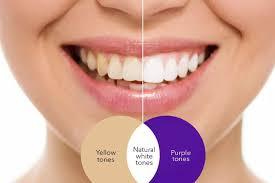
Overview of the Product
At its core, Happy Smile V34 is a multi-functional oral care product that not only cleans teeth but also whitens, strengthens, and protects them. It is formulated with advanced ingredients that work synergistically to provide a deep clean while also promoting oral health.
Key Features and Benefits
The key features of Happy Smile V34 include its whitening capabilities, plaque removal efficiency, and ability to strengthen enamel. It also has antibacterial properties, helping to reduce bad breath and prevent gum disease. Users have reported noticeable improvements in the brightness of their teeth and overall oral health after just a few uses.
3. The Science Behind Happy Smile V34
Happy Smile V34 is not just another dental product on the market; it is backed by science and research. The formulation includes a blend of ingredients that have been clinically proven to enhance oral health.
Ingredients that Make a Difference
The product contains a unique mix of ingredients, such as activated charcoal for whitening, hydroxyapatite for enamel strengthening, and xylitol for reducing bacterial growth. Each component plays a specific role in maintaining oral health, making Happy Smile V34 a comprehensive solution.
Clinical Studies and Efficacy
Clinical studies have shown that Happy Smile V34 significantly reduces plaque and tartar buildup, whitens teeth without causing sensitivity, and strengthens enamel over time. The efficacy of the product is further supported by extensive research and user testimonials, underscoring its benefits and reliability.
4. Unique Selling Points of Happy Smile V34
Happy Smile V34 offers several unique selling points that distinguish it from other products in the market. These features make it a preferred choice for consumers looking for an all-in-one solution for their oral care needs.
There are an affiliate link of this product its may make profit of me Happy Smile V34
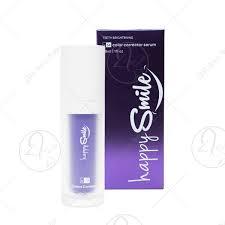
What Sets It Apart from Other Products?
Unlike traditional toothpaste or whitening strips, Happy Smile V34 provides a holistic approach to oral care. It not only whitens teeth but also offers comprehensive protection and strengthening. Its unique formulation ensures effective results without causing damage to the enamel or gum tissue.
Testimonials and User Experiences
Users of Happy Smile V34 have shared glowing reviews about their experiences, citing improvements in tooth sensitivity, gum health, and the overall appearance of their teeth. These testimonials provide strong evidence of the product's effectiveness and have contributed to its growing popularity.
5. How to Use Happy Smile V34 for Best Results
Using Happy Smile V34 is simple, but following the correct method ensures optimal results. Here’s a step-by-step guide on how to get the most out of this product.
Step-by-Step Guide to Application
To use Happy Smile V34, apply a small amount of the product to your toothbrush. Brush your teeth thoroughly, ensuring you cover all surfaces. Allow the product to remain on your teeth for a few minutes before rinsing to maximize its whitening and strengthening effects. Use it twice daily for the best results.
Common Mistakes to Avoid
Avoid using too much product, as this can lead to wastage without additional benefits. Also, do not rinse immediately after brushing; allow the ingredients time to work on your teeth and gums. Consistency is key, so make sure to use the product regularly.
There are an affiliate link of this product its may make profit of me Happy Smile V34
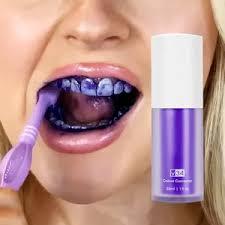
6. Who Should Use Happy Smile V34?
Happy Smile V34 is suitable for a wide range of users, but certain demographics may find it particularly beneficial. Understanding who can benefit the most will help in making an informed decision.
Target Audience and Demographics
This product is ideal for anyone looking to enhance their oral hygiene routine, particularly those with concerns about tooth discoloration, sensitivity, or weak enamel. It’s also suitable for individuals with gum health issues, as it offers antibacterial properties that promote healthier gums.
Specific Dental Issues Addressed
Happy Smile V34 addresses multiple dental issues, including staining, sensitivity, plaque buildup, and enamel erosion. Its comprehensive formula is designed to tackle these problems simultaneously, offering a one-stop solution for oral care.
7. Comparative Analysis with Other Dental Products
To fully appreciate the benefits of Happy Smile V34, it is helpful to compare it with other dental products available on the market.
Happy Smile V34 vs. Traditional Toothpastes
Traditional toothpastes primarily focus on cleaning and sometimes offer limited whitening capabilities. In contrast, Happy Smile V34 provides a broader range of benefits, including whitening, strengthening, and antibacterial effects, making it a superior choice for comprehensive oral care.
There are an affiliate link of this product its may make profit of me Happy Smile V34
Happy Smile V34 vs. Other Whitening Solutions
While many whitening solutions can cause sensitivity or damage to enamel, Happy Smile V34 is formulated to be gentle yet effective. It whitens teeth without the harsh chemicals often found in other products, preserving enamel and preventing gum irritation.
8. Potential Side Effects and Precautions
Like any dental product, Happy Smile V34 may have potential side effects, though they are generally minimal and rare. Being aware of these can help users make an informed decision.
There are an affiliate link of this product its may make profit of me Happy Smile V34

Understanding the Risks
Some users may experience mild sensitivity when using the product for the first time. This is usually temporary and diminishes with continued use. It’s important to follow the instructions carefully to minimize any potential discomfort.
How to Mitigate Side Effects
To reduce the likelihood of side effects, use the product as directed and avoid overuse. If sensitivity persists, consider using a toothpaste for sensitive teeth in conjunction with Happy Smile V34. Always consult with a dental professional if you have specific concerns.
9. The Environmental Impact of Happy Smile V34
In addition to its benefits for oral health, Happy Smile V34 is also designed with environmental considerations in mind.
Sustainable Practices in Production
The manufacturing process of Happy Smile V34 emphasizes sustainability, using eco-friendly ingredients and reducing waste. The company is committed to minimizing its carbon footprint and promoting environmentally responsible practices.
Biodegradable Packaging and Eco-Friendliness
Happy Smile V34 comes in biodegradable packaging, reducing its impact on the environment. This commitment to sustainability makes it a responsible choice for environmentally conscious consumers.
10. Where to Buy Happy Smile V34 and Pricing
Happy Smile V34 is widely available, making it easy for consumers to purchase the product through various channels.
Available Platforms and Stores
The product can be purchased online through the official website, major e-commerce platforms, and selected retail stores. This wide availability ensures that consumers can easily access the product from wherever they are.
There are an affiliate link of this product its may make profit of me Happy Smile V34
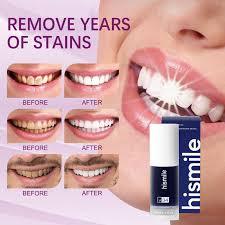
Cost Analysis and Value for Money
While the price of Happy Smile V34 may be higher than some traditional toothpastes, its multi-functional benefits and high-quality ingredients provide excellent value for money. Investing in a product that offers comprehensive oral care can save money in the long run by reducing the need for additional dental products
11. Conclusion: Why Happy Smile V34 is a Game-Changer in Dental Care
Happy Smile V34 is more than just a dental product; it's a comprehensive oral care solution that addresses multiple aspects of dental health. Its unique blend of scientifically-backed ingredients not only whitens teeth but also strengthens enamel, fights bacteria, and promotes overall gum health. The product's commitment to sustainability through eco-friendly production practices and biodegradable packaging further enhances its appeal to environmentally conscious consumers.
With proven efficacy in clinical studies and positive testimonials from users, Happy Smile V34 sets a new standard in the world of dental care. It combines the best of modern dental science with a user-friendly approach, making it accessible and effective for a wide range of users. Whether you're looking to brighten your smile, strengthen your teeth, or maintain good oral health, Happy Smile V34 offers a trusted, innovative solution that truly makes a difference.
Disclaimer
The information provided in this article is for general informational purposes only and should not be considered as professional medical or dental advice. Happy Smile V34 is a dental care product designed to improve oral hygiene, but individual results may vary. It is important to consult with a licensed dental professional before starting any new oral care regimen, especially if you have pre-existing dental conditions or concerns. The product should be used as directed, and users should be aware of potential allergies or sensitivities to any of the ingredients. Happy Smile V34 and its manufacturers are not responsible for any adverse effects or outcomes resulting from the use of this product. Always read labels, warnings, and directions provided with the product before use.
#happysmile#smile#beautiful smile#pretty smile#great smile#teeth#teeth whitening#rooster teeth#gnashing of teeth#dr teeth and the electric mayhem#happy smile v34#her smile
0 notes
Text
Discover the top water flossers that can elevate your dental health routine. Say goodbye to plaque and hello to a brighter smile with these effective solutions! Discover the ultimate secrets to achieving exceptional dental health with our curated selection of the best water flossers on the market. These innovative devices not only enhance your oral hygiene routine but also make flossing easier and more effective. Say goodbye to traditional methods and embrace a refreshing way to care for your smile! Benefits of Water Flossers for Oral Health Water flossers provide numerous benefits for your oral health, making them a valuable addition to your dental care routine. They effectively remove food particles and plaque from hard-to-reach areas between your teeth and along the gum line. By using water pressure, they can reach areas that traditional floss may miss, helping to prevent gum disease and cavities. Additionally, water flossers are gentle on the gums. They can soothe and massage the gum tissue, promoting better blood circulation and overall oral health. Using a water flosser can be especially beneficial for individuals with braces, implants, or other dental work, as these devices make cleaning around complex dental structures easier. Regular use of a water flosser can lead to healthier gums, fresher breath, and a brighter smile. Types of Water Flossers Available When selecting a water flosser, you will find various types to suit your needs. Here are the most common options: Countertop Water Flossers: These are larger devices that sit on your countertop. They offer powerful water pressure and come with multiple tips for different cleaning needs. Portable Water Flossers: Compact and battery-operated, these are ideal for travel. They provide convenience without sacrificing functionality, making them perfect for on-the-go use. Battery-Operated Water Flossers: These are similar to portable models but may not be as compact. They run on batteries, allowing for flexibility in different locations without needing a power outlet. Shower Flossers: Designed to be used in the shower, these devices utilize the water flow from your showerhead, providing a hygienic and convenient option for quick flossing. Choosing the right type of water flosser depends on your lifestyle, space, and personal preferences. Regardless of the type you choose, incorporating a water flosser into your oral hygiene routine can significantly enhance your overall dental health. Top Brands in the Water Flosser Market The water flosser market is filled with numerous brands, each offering unique features and benefits. When selecting a water flosser, it's essential to consider the reputation and reliability of the brand. Below is a table that highlights some of the top brands in the water flosser market along with their key offerings: BrandKey FeaturesPrice RangeWaterpikMultiple pressure settings, variety of tips, ADA accepted$50 - $100Philips SonicareSmart sensor technology, sleek design, powerful water pressure$80 - $120PanasonicCompact design, portable options, adjustable water flow$40 - $80Oral-B2-in-1 brushing and flossing, multiple modes, user-friendly interface$70 - $130H2oflossAffordable, high-capacity water tank, quiet operation$30 - $50 How to Use a Water Flosser Properly Using a water flosser correctly can greatly enhance your dental hygiene routine. Follow these steps to maximize the effectiveness of your water flosser: StepInstructions1Fill the reservoir with warm water and add mouthwash if desired.2Choose the appropriate flosser tip and attach it securely.3Turn the water flosser on and select your preferred pressure setting.4Lean over the sink, place the tip in your mouth, and start the device.5Guide the tip along the gum line, pausing briefly between teeth.6Finish by rinsing your mouth with water or mouthwash for extra freshness. This HTML content includes specified headings and formatted tables, focusing
on key brands in the water flosser market and step-by-step instructions on how to use them properly. Comparison of Water Flossers vs. Traditional Flossing When it comes to oral hygiene, many people debate between using water flossers and traditional dental floss. Water flossers use a pressurized stream of pulsating water to remove food particles and plaque between teeth and along the gum line. This method is often more comfortable and easier for users to handle. Traditional flossing, on the other hand, requires manual dexterity and can sometimes be less effective in reaching tight spaces. Research shows that water flossers can reach areas traditional floss might miss, making them an excellent choice for individuals with braces or other dental appliances. Ultimately, choosing between the two methods depends on personal preference, but many find that incorporating a water flosser into their routine enhances their overall dental health. Features to Consider When Choosing a Water Flosser When selecting a water flosser, it's essential to consider several key features to ensure you pick the best model for your needs. Here are some important aspects to evaluate: Water Pressure Settings: Choose a flosser with adjustable pressure settings to customize your experience for comfort and effectiveness. Nozzle Types: Look for models that come with different nozzle attachments for targeted cleaning in various areas, such as braces, implants, or periodontal pockets. Tank Capacity: A larger water tank means longer usage time between refills, which can be more convenient, especially for families. Size and Portability: Consider whether you need a compact, travel-friendly flosser or a larger model that stays in one place at home. Ease of Use: Check for ergonomic designs and simple controls, making it easier for anyone to use. By taking these features into account, you can find a water flosser that best suits your lifestyle and enhances your dental care routine. The Best Water Flossers For Dental Health 1. What is a water flosser and how does it work? A water flosser is a dental device that uses a stream of pulsating water to remove food particles and plaque from between the teeth and below the gumline. It works by directing a focused jet of water in a controlled manner to clean areas that traditional floss may miss. 2. Are water flossers effective at improving dental health? Yes, studies have shown that water flossers can be effective in reducing plaque and gingivitis, particularly for individuals with braces, implants, or those who have difficulty using traditional floss. They can complement regular brushing and flossing for optimal dental hygiene. 3. What features should I look for in a good water flosser? When choosing a water flosser, consider features such as adjustable water pressure settings, different nozzle attachments for specific needs, a large water reservoir for extended use, portability (if you travel), and ease of cleaning and maintenance. 4. Can anyone use a water flosser? While most people can benefit from using a water flosser, it is particularly useful for those with braces, dental implants, or periodontal disease. However, individuals with certain medical conditions or concerns should consult their dentist before using one. 5. How often should I use a water flosser for best results? For optimal dental health, it is recommended to use a water flosser at least once a day, ideally before or after brushing your teeth. Consistent use can help maintain healthy gums and reduce plaque buildup.
0 notes
Text
The Power of the Electric Water Flosser
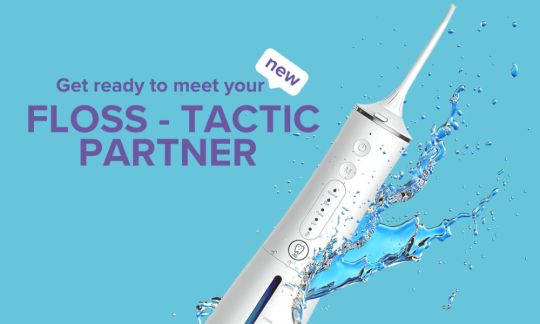
In the realm of dental care, the electric water flosser emerges as a formidable innovation amidst a landscape of continual advancements aimed at enhancing oral hygiene. Its significance extends beyond mere novelty, fundamentally reshaping perspectives on routine dental maintenance. Combining traditional flossing techniques with cutting-edge technology, this device stands out as a transformative tool rather than just another product on the market. Its introduction has sparked a global revolution, drawing attention from those seeking superior dental health. Notably, its ability to use pulsating water to effectively clean tight spaces between teeth sets it apart as a pioneering solution. For further exploration of this topic, follow the provided link to expand your understanding. Read More
#Electric Water Flosser#Teeth Pressure Washer#Cordless Water Flosser#Best Dental Flossers#Water Flosser
0 notes
Text
0 notes
Text
0 notes
Text
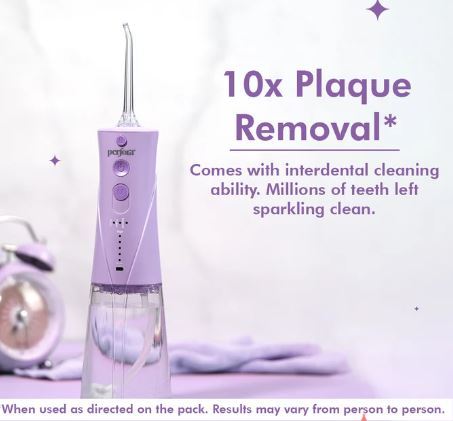
Explore our expert guide to the best recommended water flossers on the market. Learn how using a water flosser can enhance your oral hygiene routine, improve gum health, and reduce plaque. Dive into our reviews to choose the perfect model for you and achieve a cleaner, healthier smile!
0 notes